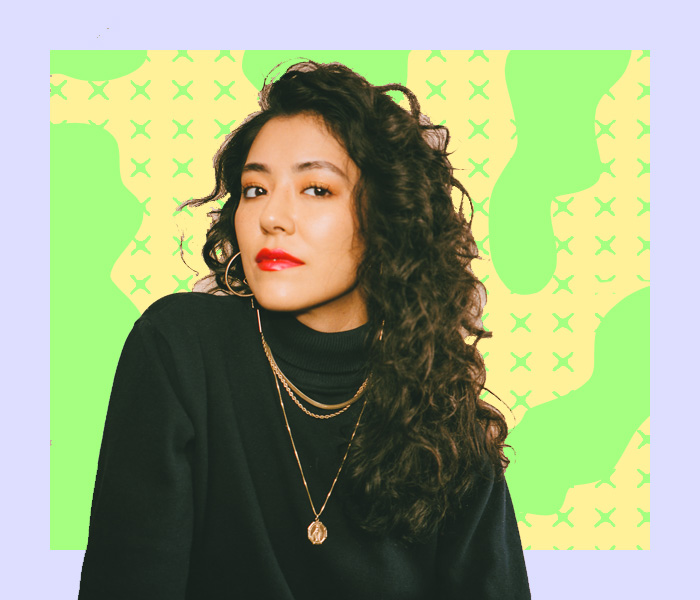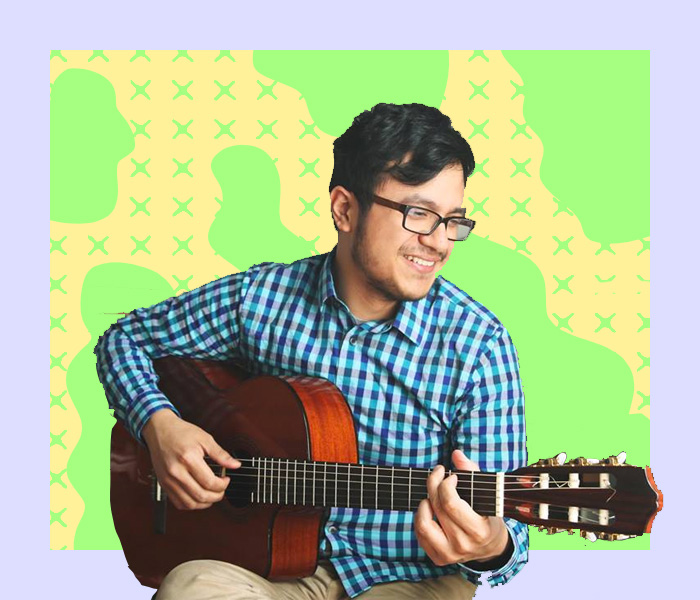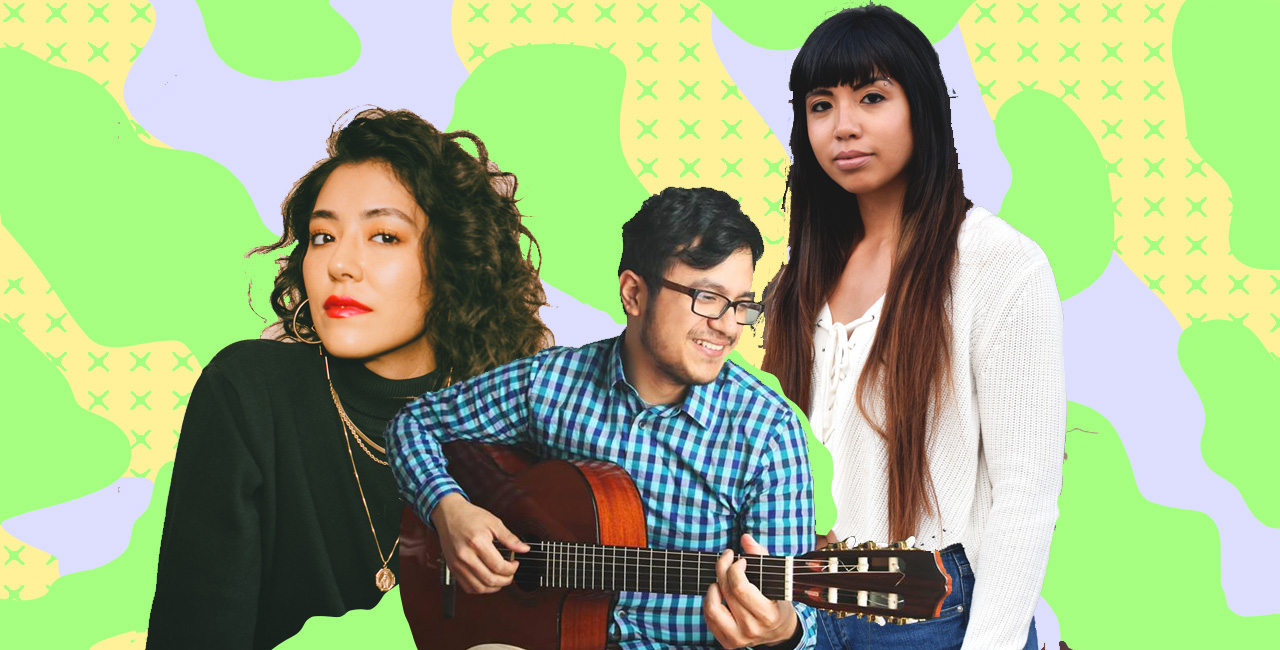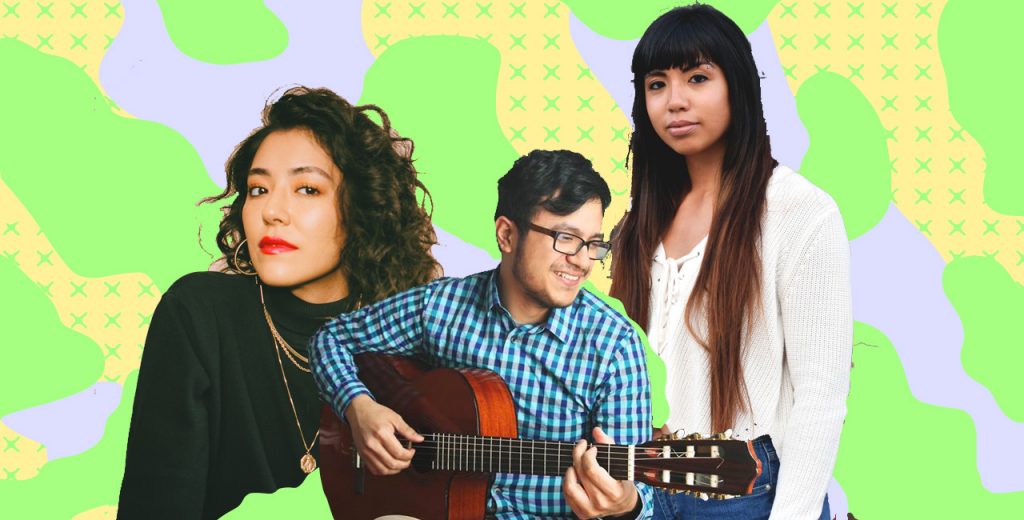Belonging to an immigrant community in the United States is hard enough as it is. Between not seeing accurate or positive portrayals of yourself in the media and not necessarily fitting in with your peers, you become filled with questions about identity. Now, imagine being a part of two separate immigrant communities – that is, two places with different customs, languages, and beliefs – while growing up in the US. If this is your reality, then you know you simultaneously inhabit three different worlds, and it’s not always easy to reconcile the disparities between them.
For Marina Tijerino, Chris Lee-Rodriguez, and Mekita Rivas – who have Asian family members on one side and Latin Americans on the other – defining themselves as a part of two marginalized groups has been a process. Growing up, they rarely met people who understood their experiences (that’s not to say that Latinos of Asian heritage do not feel the influence of both Latin America and Asia). With “What Are You?” constantly lingering in the air, people forced them to answer questions about their identity – even if they themselves had yet to figure it out. With the help of their families and through their own initiative, they have found their place.
We spoke to them to learn more about their experiences as Asians and Latinos. Through their stories, we learned how their two cultures overlapped and how they view themselves.
Editor’s Note: These three stories merely offer a small window into the Asian and Latino experience.
1
Marina Tijerino

Artist and singer Marina Tijerino didn’t always identify as Asian-Latinx. Born in Japan to Japanese and Venezuelan parents, she didn’t have the language necessary to ID herself growing up. Now, she realizes, she doesn’t need to do it in one word.
“My entire existence felt like a culture clash all the time,” she tells me. “When your parents are from two completely different cultures, it causes a lot of tension. It’s not always negative.”
Raised between the United States and Japan, Marina didn’t have a strong community to call her own. “A huge aspect of my life was feeling that I didn’t have any roots,” she says. “I felt rootless.” It didn’t help that her family moved around, which made her feel disconnected from both sides. But eventually, it was her family, who came to define their identity on their own terms, that helped her understand who she was. That’s why, even now that she lives in Utah – a place where she had no roots – she feels at home.
“What is fascinating is having a mix of those cultures is that we are the amalgamation of entirely different ways of living,” she adds. “I haven’t met anyone else who is Japanese-Venezuelan, other than my siblings. It’s like we’ve created our own culture.”
Food has certainly played a major role in building a complete picture. Her mother sometimes used Japanese ingredients or meat styles to make Venezuelan arepas. This culinary fusion was something they could call their own, something that could only have existed in households like hers.
During her childhood in Japan, she’d often hear the word hafu (ハーフ) to refer to people of mixed background. But with the word meaning half in English, Tijerino felt the word had negative connotations. “To call someone half isn’t factual,” she says. “I am [a] full person. I’ve had to continuously explain myself and my existence.”
Additionally, Tijerino explains, she doesn’t use the word hafu because in Japan, it upholds the erroneous narrative that most people are half white. “That eurocentric view of ethnicity exists everywhere,” she says. “The ideal hafu is someone with blue eyes, light skin, blonde hair. Along that vein, I try and remind people that if you’re mixed race in Japan and you’re dark or … Black, you deal with so much more discrimination… Anti-Blackness in Japan is intense.”
Instead, she prefers the term dabaru (ダブル) – a term that’s gaining more traction to describe those of mixed heritage – or double. “It’s saying something like, I’m not half; I’m both these things,” she says.
Belonging to these two groups has shaped her experiences and formed her worldview. But it’s not all been positive. As someone of Venezuelan and Japanese heritage, she belongs to two groups that are othered and exoticized. “When I’m around Latino guys, even though I’m also Latina but have this Asian side, I’ve been exoticized a lot,” she says. “Some of the worst [abuses] I’ve encountered have been from people of color that are obsessed that I’m part Japanese, part this. It’s like I’m a rare prize. That kind of exotification early on is taught to be a compliment. [But] you’re not seeing me as a person; you’re seeing me as an exciting adventure.”
2
Chris Lee-Rodriguez

When Chris Lee-Rodriguez’s students ask, “What are you?” he says “I’m human.” And when they ask where his parents are from, he says, “Chicago and New York.”
Born to a Puerto Rican mom from Chicago and a Chinese-American dad from New York, musician and educator Lee-Rodriguez knows firsthand that culture is forever evolving – especially his own.
“Culture changes from generation to generation,” he tells me. “For example, the concept of the American Chinatown has changed the way Chinese culture and Asian culture in general was perceived in this country. When I think about being Chinese, I think about being Chinese-American. All of my relatives are Chinese-American and they all have these specific New York Chinese accents… And the idea of Nuyoricans is very different than of Puerto Ricans that live on the island. There’s a disconnect between those two cultures, too.”
Because he and his parents were born in the United States, Lee-Rodriguez has come to understand that this country has shaped his identity. “No matter how I am or want to be, my mannerisms, my experience, my culture are specifically American – whatever that means,” he adds. “When I travel outside the country, I feel awkwardly American. When I teach Hispanic kids, they call me gringo because of my accent. So no matter how I view or understand the world, I’m stuck in this paradigm of things I do accept.”
Raised in New Jersey, the New York native didn’t feel like he belonged to any particular group growing up. His mother didn’t teach him Spanish, and his father – who wasn’t too close to his Chinese background – didn’t speak a lot about his background. Feeling like an outsider in the communities he was a part of, he couldn’t relate to his peers, and even his family.
Though he learned of his Puerto Rican background through his mother, he yearned to know more about his Chinese heritage. “My dad took me to a park and sat me down and told me the family history of what he knew, which wasn’t a lot,” he says. “But the fact he made an effort meant a lot.”
The way he looks also distanced him from his family members. “When I’m with my Hispanic relatives, I’m definitely more Asian looking,” Lee-Rodriguez says. “When I’m with my Asian relatives, I’m definitely the darkest person there. It’s [an] interesting thing I always grappled with.”
Society has also struggled to identify him – something he is acutely aware of. “I’ve gotten Filipino, Indian,” he says. “White people thought I was Black. Black people thought I was white… People call me racial slurs of things I’m not. It’s interesting and always confusing. I never know where I fit sometimes.”
But it’s the traditions – both from his cultures and those that sprung in his household – that have given him a way to define himself. His parents cooked arroz con gandules, pernil, Chinese sausage, chicken and rice at home during his childhood. For Chinese New Year, he’d head to dinner with his family and receive red envelopes filled with money, which signify good luck.
When he lived in Boston, he’d attend traditional line dances organized by martial arts schools.
“I would always go to these events, not to get closer to my identity, but to feel some type of normalcy, to see something familiar,” he says. “And the familiarity of these rituals wasn’t because I believe in it, more so, because it reminded me of a certain thing.”
3
Mekita Rivas

“I always have to be prepared to explain myself.” With a Filipino mother and Mexican father, Mekita Rivas knows she’ll inevitably get questions about her identity. This was certainly true in Lincoln, Nebraska – where she grew up – where her family was often the only family of color. Today, Lincoln is more than 80 percent white, while Latino and Asian populations hover at a combined 10 percent.
“It made the world really complicated,” she tells me. “It still makes it complicated. That’s still something I’m learning to navigate every day. It’s a weight you carry your whole life where you’re sort of representative of the cultures and an embodiment of them. It’s easy on some days, and it’s harder on some days.”
Other than the annual holiday parties the small Filipino community organized in Lincoln, she found it difficult to connect to this part of her. Her mother arrived in the United States in the 1970s and has only returned to the Philippines two or three times. But because she’s a chef by trade, Rivas’ mother creates dishes that inspired by her birthplace. Rivas grew up eating rice with every meal and learned how to eat with chopsticks at a young age. Her mother made classics like pancit and lumpia. And once in a while, she’d mix it up.
“She also has her own fusion creations of food, where we would have something that is Filipino, but mix it with something very American,” she says. “So she was always making all sorts of things.”
While food gave her an in, language made her feel isolated. Her parents didn’t teach her Tagalog or Spanish, though she’s worked to learn her dad’s native tongue. “I started taking it in high school and college,” she says. “I can get by and speak it conversationally, but I’m not fluent. That is a big point of insecurity for me as a Mexican-American and another thing that separates me from that culture.”
But it wasn’t as though she had no connection to Mexico. As a kid, she visited Mexico regularly, learning about Nuevo Laredo, where her father is from. However, family trips ceased in the early 2000s as the area saw an increase in drug-related violence. “My budding relationship with Mexico kind of came to an end,” she says. “I [hadn’t] been back until 2016. It was the first time I went back in like 14 years.”
Unlike other Asian-Latinx, the gaps between Mexicans and Filipinos are not as vast. Both the Philippines and Mexico have Spanish colonization in common, and therefore the two countries share several traditions, foods, and even words. It means Rivas didn’t see tension between her communities. “How these two cultures interact with American culture in particular is very similar,” she says. “Growing up, I never felt that they were wildly different.”
All that she’s been through has changed the way she approaches the question “What are you?” “I have a back and forth relationship with that,” she says. “For a long time, it made me feel insecure, until college. Then, I was resentful and mad that people feel compelled to ask me that. And now, I try and play with it and find humor and an opportunity to educate people.”




